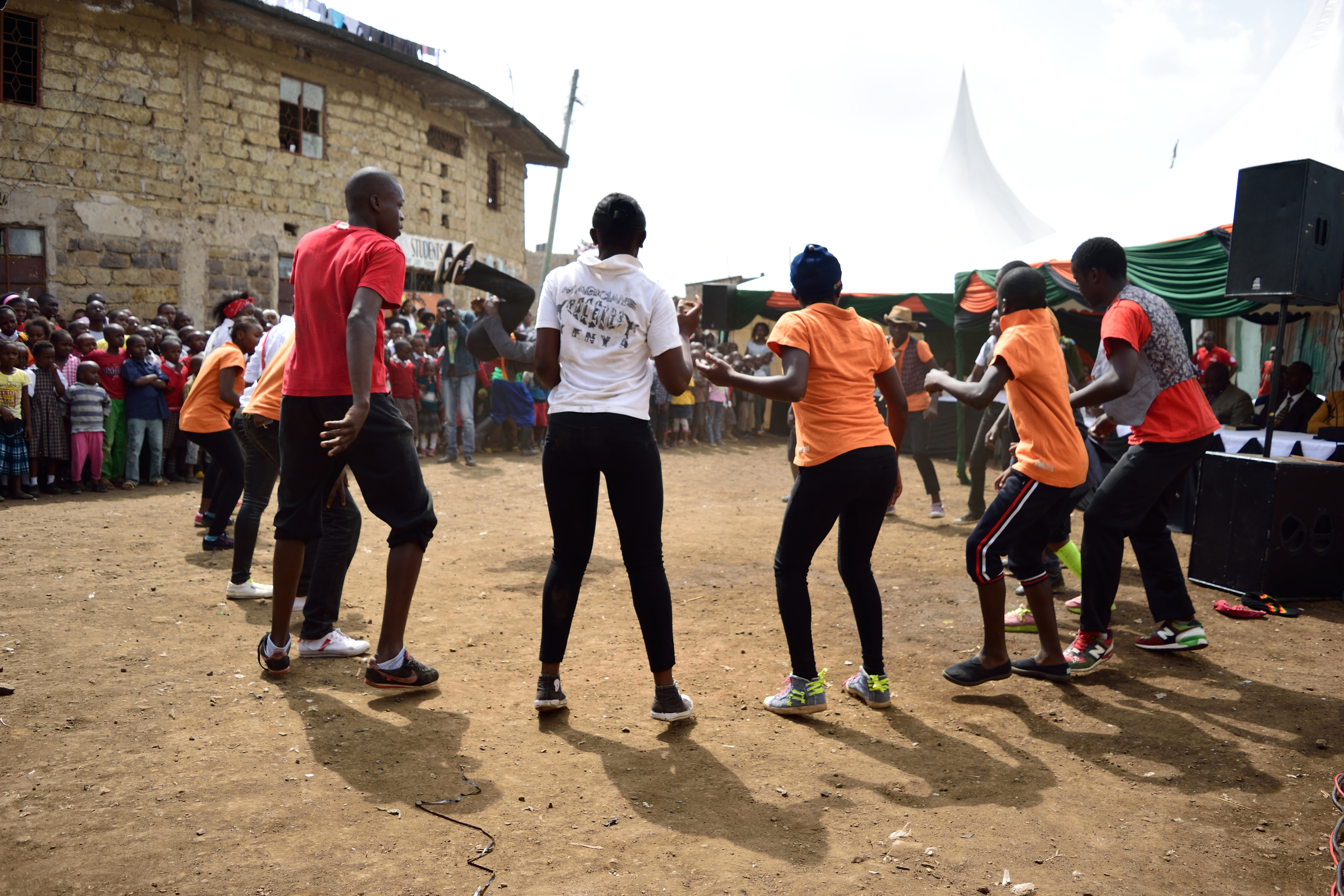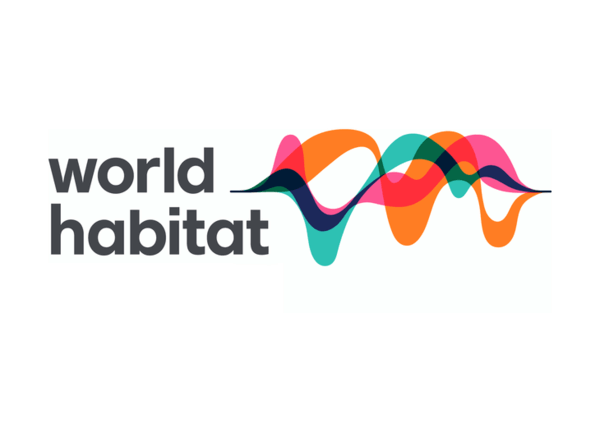- Children from Dandora phase 2 performing local songs during the launch of Changing faces competition. Changing faces competition is a public space competition between different courtyards in Dandora - © Michelle Wanjiru
 Image of women in Dandora successfully planting the first tree along the tree - © Naomi Hoogervorst
Image of women in Dandora successfully planting the first tree along the tree - © Naomi Hoogervorst Image of the children skating along the newly completed street - © Michelle Wanjiru
Image of the children skating along the newly completed street - © Michelle Wanjiru
City
Nairobi
Main actors
Local Government, Supranational / Intergovernmental Institutions, Private Sector, NGO / Philanthropy, Community / Citizen Group, Research Institutes / Universities
Project area
Whole City/Administrative Region
Duration
2015 - 2018
A collaborative project supporting community-led design to improve public spaces.
World Habitat Awards
This project was shortlisted for the 'World Habitat Awards' in 2018 in the following category: Finalist.
Field research - Students conducted initial in-depth socio-spatial research of public spaces in Nairobi, starting an inventory which eventually became the UNHabitat Public Space programme.
Placemaking labs - The students presented their research outcomes during the placemaking lab. Sessions involved international and local experts as well as the Community Based Organisations (CBOs) chosen to lead community involvement. One of them, the ‘Must Seed’ project was selected for implementation after this stage. The Dandora Transformation League provided and facilitated representation for the community of Dandora.
Minecraft workshop - A shared design session held with the support of UN-Habitat. This approach provided community representatives with Minecraft gaming software so they could reimagine public spaces together. Dandora has a diverse demography consisting of a rich mix of different ages, gender and socioeconomic groups. The Dandora Transformation League selected 26 participants made up of equal parts men/women, different age groups, various courts (housing estates), those with disabilities, and different income levels. Each representative had to be available for four interactive sessions. The students were also part of the design teams.
Building Parties - Organised by the Dandora Transformation League with technical support and funding from a range of partners involved in the Making Cities Together initiative. Community leaders and resident volunteers got together at weekends to take action to improve the living environment.
Technical Preparation Work - Works requiring additional technical support were taken forward by the Dandora Transformation League with technical support from Making Cities Together partners.
Launch - The Model Street was officially launched by UN-Habitat and Dandora Transformation League on Saturday 14 April 2018.
- Workshop Minecraft Designs: USD$2,820 (DOEN Foundation, UN-Habitat and Placemakers).
- Construction of Minecraft Designs: USD$76,400 (DOEN Foundation and UN-Habitat).
- Elaboration of the Minecraft Design: USD$4,930 (DOEN Foundation and UN-Habitat).
- Equipment hire for cleaning the street: USD$7,540 (UN-Habitat).
- Building Party to support community mobilisation: USD$11,770 (DOEN Foundation and UN-Habitat).
- Launch of Court Yard Competition & Entrances on Model Street: USD$6,178 (UN-Habitat).
- Public Event on Public Spaces: USD$5,500 (DOEN Foundation).
- Community Maintenance Planning: USD$1,420 (UN-Habitat).
- All stages incorporated a participatory process, guided by the Community Based Organisation (the Dandora Transformation League) which identified and recruited people from across the neighbourhood.
- For some women who were not active in the process the team introduced flag making (as they had noticed the women sitting on the streets doing beadwork). The flags were then used to section off the streets during building parties.
- Teenage artists were brought in to paint, and Minecraft enabled the inclusion of disabled people, children and elderly people. Others were attracted through social events like lunches and the building parties.
- Overall the process has motivated and involved young people in particular, and others across the neighbourhood. The improvements have had a positive impact on the health and safety of residents. This has led to an increased sense of empowerment and stronger connections and influence for the community.
Legal impact
Auditing public open space helped Making Cities Together partners engage in regional policy-making. This work led to a commitment by Nairobi City County to develop a Public Open Spaces Bill. Over 1,000 public spaces were identified in the city. The bill seeks to protect and improve these spaces for public use and promote shared responsibility in the maintenance of them.
- The project has improved public space in Phase 2 of the Dandora community, which houses over 5,000 low income people. Impacts include:
- Increased safety (reduced crime through better lighting and community policing).
- Improved neighbourhood maintenance and management.
- Local shops have seen increased business (according to a survey of owners there are more customers and they are able to stay open later as the street feels safer).
- New businesses have opened (one in particular rents out skates and bikes to children so they can play on the newly paved street). Greater community involvement increased land values, which has encouraged more residents to upgrade (paint and fix up) their houses.
Using mixed finance to fund the project was a challenge for the partners, which required clear management and diligence. Power struggles and relationship tensions were overcome through dialogue. A controversial election result occurred during project implementation which required ongoing communication and patience between partners.
Key success factors include:
- the high level of collaboration achieved between partners and the community;
- the ‘big changes through small actions’ approach: build in adequate time for unexpected delays, to reduce the strain on relationships. Starting an initiative like this where people are not used to it requires a high level of commitment and perseverance, but acceptance becomes quicker once the process can be shown to succeed;
- the use of Minecraft to facilitate public participation and creative thinking;
- the approach employed by the Dandora Transformation League to encourage community and youth engagement with the project.
A report ‘Minecraft Workshop in Dandora: Process and outcomes’ was published in 2015. The report found that using Minecraft to engage the community was highly effective both in people being able to express and visualise their needs, and in decision-makers understanding what they were being told. Some improvements were suggested in relation to inclusion - for example changing the times of workshops to avoid busy times for women and children, and directly involving local schools.
External links / documents
On Map
The Map will be displayed after accepting cookie policy

